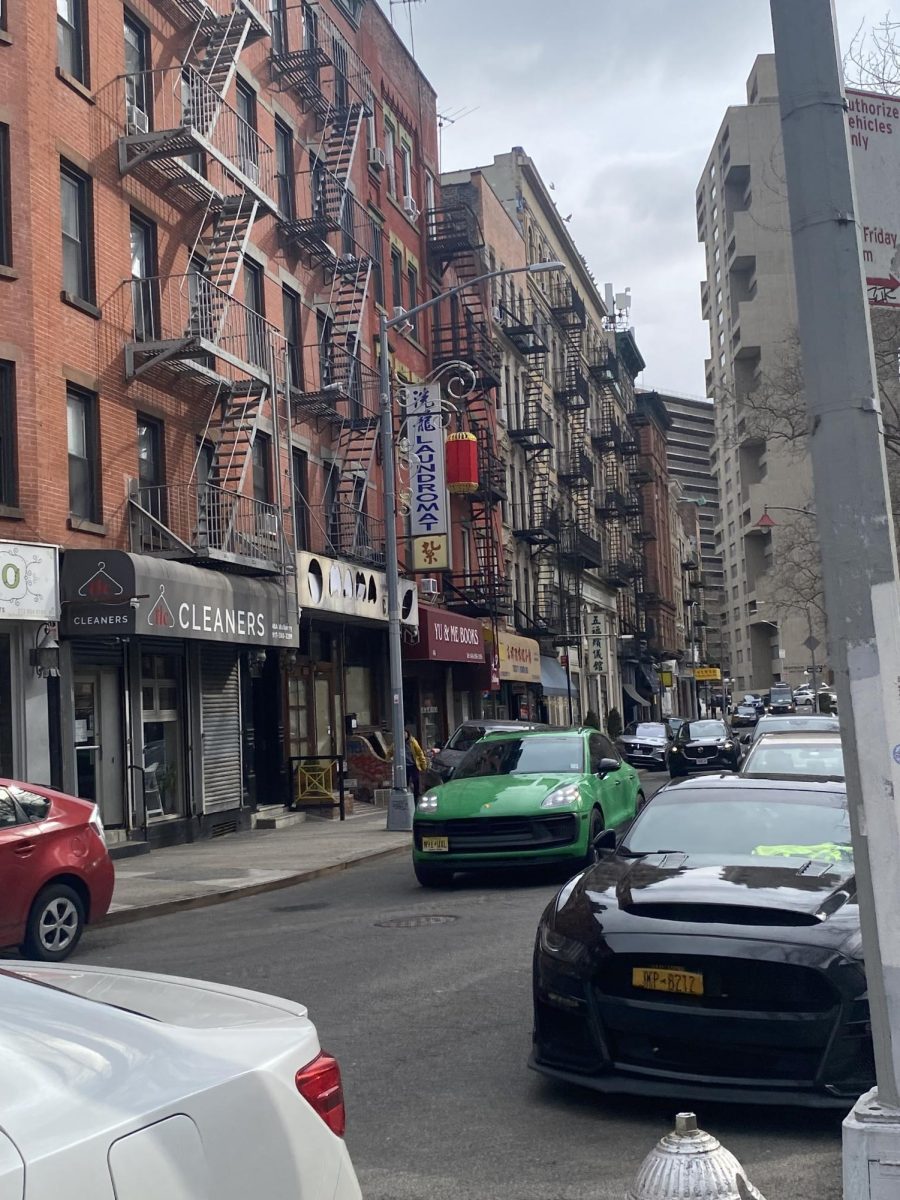If you have been in New York this summer, then you have probably had your fair share of encounters with spotted lanternflies. Whether it was in your own backyard or in New York City, this species has made its way to fourteen US states including New York, Connecticut, and Pennsylvania. However, a question that many are asking is: when and where did they even come from?
Spotted lanternflies are a planthopper species– a small, vastly distributed plant-sucking bug that leaps when disturbed – native to China and Vietnam. First discovered in 2014 in Pennsylvania, it arrived through a stone shipment from China. Although they have been in the US for almost a decade, they have only recently been seen infesting areas. This is because as an invasive species, they are not native to the United States, meaning that in order for their population to reach vast numbers in the US, more and more lantern flies need to reproduce which takes years.

One of many squished lanternflies found under Kroger Arch. More and more have been found dead as students follow the guide to kill the ones they see.
Emma Olsen, a Middle School science teacher, explained how the Tree of Heaven is the lanternflies’ host plant. This species of tree was brought over from China in the 1700s and provides a space for the flies to lay their eggs in the soil around the tree. As they grow up and transition into their adult stages, they progress further up the tree, ultimately invading their host plant.
The reason why spotted lanternflies have continued to spread at a fast rate is because of their lack of predators. Since the Tree of Heaven is a toxic species, when young lanternflies feed on the tree as they develop, they are ingesting the toxicity resulting in them becoming toxic as well. Therefore, other animals choose to not prey on them because of this, allowing their population to continue to grow. In addition to their toxicity, climate change has also encouraged their widespread growth. Scientists believed that their population would die down due to harsh US winters. However, due to recent moderate temperatures, spotted lanternfly eggs have survived through the winter.
“[Lanternflies] are not really established here yet; they are just moving in. We are still at the point where they haven’t grabbed a foothold; we could theoretically stop them. The idea is to slow them down as much as possible because it is still early in the invasion” says Mrs. Olsen when asked why they are being targeted compared to other invasive species.
Additionally, their harm to plants, such as grapes, is threatening the economy. They have been seen infesting wine vineyards and attacking grapevines, ultimately hurting the wine industry which plays a big role in the US economy.
When it comes to their effect on humans, they are harmless. They do not bite or sting. However, that does not undermine their annoyance to people every day. Junior Carly McKirgan stated, “I try to keep my distance because I know how invasive they are and I’m scared of them.”
It is difficult, however, to maintain a safe distance from them since they have followed us onto the Hilltop. Lanternflies were first spotted in the spring of 2022 on campus. In the last year and a half, they have found homes here, specifically in the few Tree of Heavens we have. They have been seen in large numbers in the courtyard, sitting on windowsills, and flying under Kroger Arch.
Compared to the amount on the Hilltop, the quantity in New York City is reaching incredibly large numbers. Junior Frances Clifford, lives in NYC and said, “I killed one yesterday and they are everywhere.” This is not an understatement as they have been seen filling street corners and even swarming cars.

Two middle school students who were trying to step on the numerous lanternflies that were swarming the courtyard. Since lanternflies are planthoppers, it was difficult to successfully squash them as they kept leaping from under their shoes.
Due to the harm lanternflies cause plants, officials have clearly instructed everyone to kill any lanternfly they see in an attempt to stop their invasion. Apart from just squishing them with your shoe, there are numerous ways of handling this situation. For example, Dawn dish soap mixed with water can be sprayed on lanternflies, causing them to suffocate. Vinegar has also provided quick results as it can kill them instantly. Although these methods are effective, they are not as efficient as stopping the problem at the root: chopping down the Tree of Heavens. The most effective way to kill lanternflies in large numbers would be to remove all but one Tree of Heaven in one area, let all the lanternflies make their way to the remaining one, and from there place traps around the tree where all the eggs are laid.
Hackley has been doing their part in helping this crisis in many ways. For example, biology teacher Tessa Johnson keeps several bottles of a vinegar and soap solution handy in the orchard. Also, in addition to hurting hornets, traps around campus are also designed to kill lanternflies that enter them. More effectively, the B&G team on the Hilltop has taken steps to slow down the lanternflies’ reproduction rate by removing the Trees of Heavens that we have here at Hackley.


















